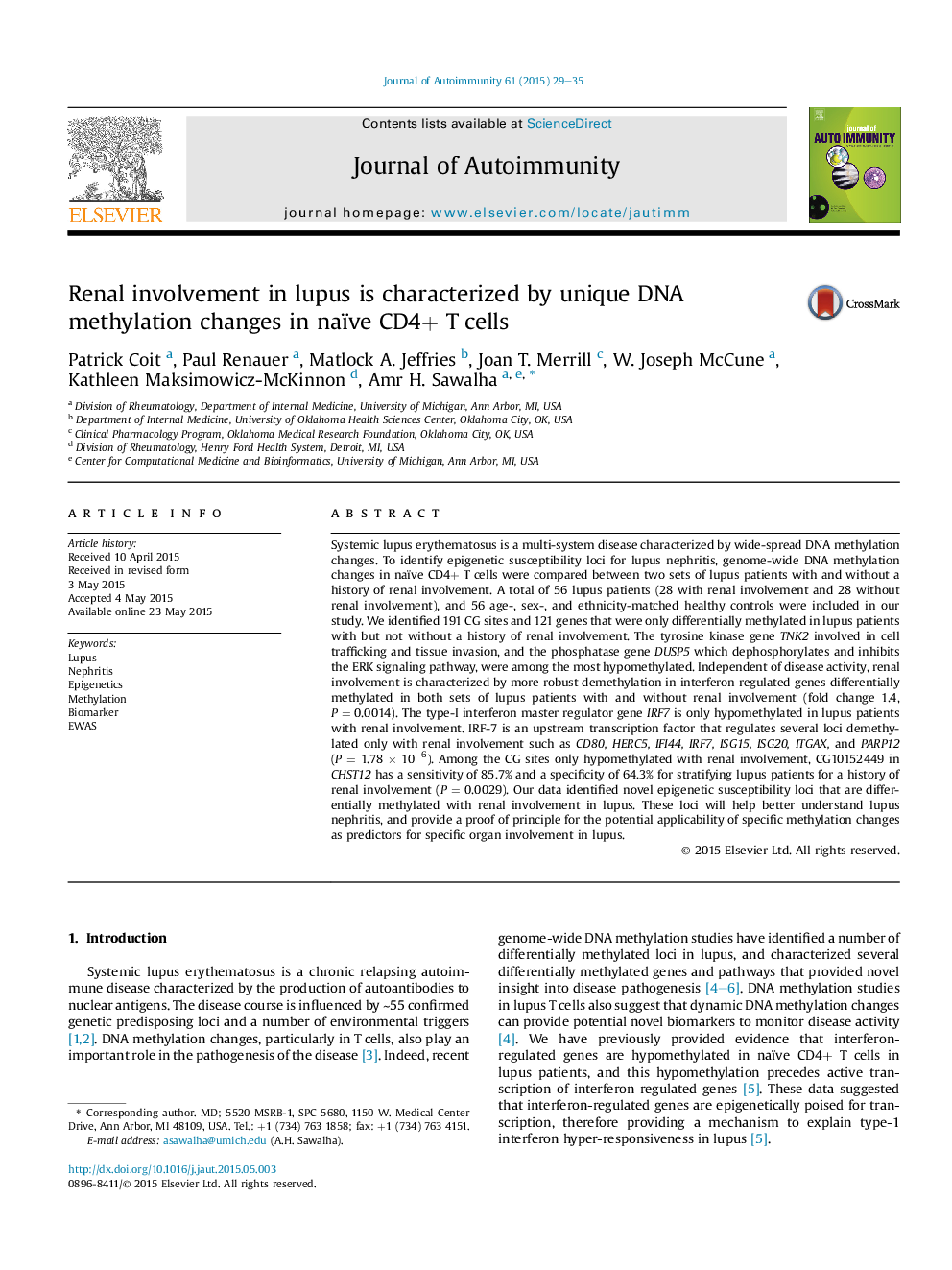| Article ID | Journal | Published Year | Pages | File Type |
|---|---|---|---|---|
| 3367709 | Journal of Autoimmunity | 2015 | 7 Pages |
•Lupus nephritis is characterized by a unique and stable DNA methylation signature.•191 CG sites are differentially methylated only with a history of lupus nephritis.•Specific DNA methylation changes might predict specific organ involvement in lupus.•Lupus nephritis is associated with robust demethylation of IFN-regulated genes.•The concept of an interferon methylation index is suggested for the first time.
Systemic lupus erythematosus is a multi-system disease characterized by wide-spread DNA methylation changes. To identify epigenetic susceptibility loci for lupus nephritis, genome-wide DNA methylation changes in naïve CD4+ T cells were compared between two sets of lupus patients with and without a history of renal involvement. A total of 56 lupus patients (28 with renal involvement and 28 without renal involvement), and 56 age-, sex-, and ethnicity-matched healthy controls were included in our study. We identified 191 CG sites and 121 genes that were only differentially methylated in lupus patients with but not without a history of renal involvement. The tyrosine kinase gene TNK2 involved in cell trafficking and tissue invasion, and the phosphatase gene DUSP5 which dephosphorylates and inhibits the ERK signaling pathway, were among the most hypomethylated. Independent of disease activity, renal involvement is characterized by more robust demethylation in interferon regulated genes differentially methylated in both sets of lupus patients with and without renal involvement (fold change 1.4, P = 0.0014). The type-I interferon master regulator gene IRF7 is only hypomethylated in lupus patients with renal involvement. IRF-7 is an upstream transcription factor that regulates several loci demethylated only with renal involvement such as CD80, HERC5, IFI44, IRF7, ISG15, ISG20, ITGAX, and PARP12 (P = 1.78 × 10−6). Among the CG sites only hypomethylated with renal involvement, CG10152449 in CHST12 has a sensitivity of 85.7% and a specificity of 64.3% for stratifying lupus patients for a history of renal involvement (P = 0.0029). Our data identified novel epigenetic susceptibility loci that are differentially methylated with renal involvement in lupus. These loci will help better understand lupus nephritis, and provide a proof of principle for the potential applicability of specific methylation changes as predictors for specific organ involvement in lupus.
